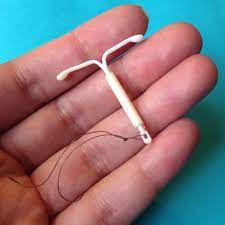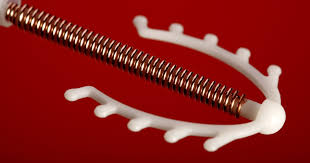Why Contraception is Important and What are the Ways Available?
6 minuteRead

By Samyati Mohanty
There are several reasons why people take contraception. This month, we discuss the advantages of contraception from an individual, group, and society perspectives.
When and how many children a person has, can be planned with contraception. Choosing
- when they want to start having children is part of this.
- how far apart they want to raise their kids
- when a couple wants to stop having kids
Women and men can pursue educational and professional aspirations that may be derailed by having children by delaying or spacing out their pregnancies. People feel more empowered as a result, and they are able to make more informed decisions. Families can devote more time and money to each child when there are fewer children.
REDUCING RISK RELATED TO PREGNANCY
Pregnancy issues are especially likely to affect young people. They are able to delay starting a family until their bodies are entirely prepared to do so because to contraception. It can also help older adults who run the risk of becoming pregnant avoid getting pregnant.
By reducing unintended births, contraceptive use lessens the need for abortion. As a result, it lessens the incidence of unsafe abortions, which are one of the main causes of maternal death globally.
REDUCING PREGNANCIES AMONG TEENS
Young people can avoid unintended pregnancies that could harm their relationships and career aspirations by utilising contraception.
Baby health issues might also result from an early pregnancy. Teenage mothers are more likely to deliver underweight babies who have a higher risk of neonatal mortality before and after birth (dying within 28 days of birth).
HEALTHY CHILDREN
High infant mortality rates, or the percentage of infants that pass away within the first year of life, are caused in part by pregnancies that are too close together or improperly scheduled.
Utilizing contraception enables women to plan their pregnancies and ensure the infant receives the best care both during and after pregnancy. This significant advancement has been made possible by improved healthcare, improved hygiene, and the adoption of contemporary contraceptive methods.
10 Techniques
For almost every body and lifestyle, there is a method. In actuality, there are currently 10 techniques and counting. These techniques include non-hormonal, hormonal, one-time use, and ongoing use.
You've come to the correct place whether you're considering trying a new birth control technique or just curious about what's available. We've done some of the research for you because we know it can be difficult to select the best birth control technique. To know about how contraception pills work, which contraceptive method is the best for you, can contraception pills delay periods and so on. To choose the birth control technique that is appropriate for your body and way of life, consider the information provided here about a few of the available options:
1. Continuous Birth Control
A surgical technique that prevents someone who can ovulate from getting pregnant or someone who can generate sperm from starting a pregnancy. 99% of the time, permanent birth control prevents pregnancy and is not reversible. While women can select a tubal block at a clinic or a bilateral tubal ligation in a hospital (often known as "getting your tubes tied"), males can select a vasectomy. Find out more about the benefits, drawbacks, and adverse effects of a vasectomy, tubal ligation, or both.
2. IUD(Hormonal/Non-Hormonal)
A tiny, t-shaped device that is 99% of the time inserted inside the uterus by a medical professional to prevent conception. If they utilise an IUD, fewer than 1 in 100 women will become pregnant each year. The IUD is one of the most effective birth control methods, and depending on the type you pick, it can last anywhere between three and ten years. It comes in non-hormonal (copper) and hormonal (plastic) versions. IUDs that are both hormonal and non-hormonal stop sperm from fertilising eggs.
3. Implant (Hormonal)
A little rod is 99% of the time inserted under the skin of the upper arm by a medical professional to prevent conception. The implant, which lasts for three years, thickens cervical mucus to make it more difficult for sperm to enter the uterus and delivers the hormone progestin to prevent the ovaries from releasing eggs.
4. The Shot (Hormonal)
A progestin hormone injection given by a medical expert that lasts three months, 99% of the time preventing conception. If they always administer the shot as instructed, fewer women will become pregnant each year. The injection, also known as Depo-Provera, thickens the cervical mucus to make it more difficult for sperm to enter the uterus and prevents the ovaries from releasing eggs.
5. The Vaginal Ring (Hormonal)
It is a flexible, monthly, three-week-long ring that, in the vast majority of cases, prevents conception. It is challenging for sperm to enter the uterus because the vaginal ring releases hormones that prevent the ovaries from producing eggs and thicken cervical mucus.
6. The Drug (Hormonal)
A medication that works best when taken consistently throughout the day, is frequently used to lessen period cramps and bleeding, and successfully 99% of the time prevents conception. The pill thickens cervical mucus, making it more difficult for sperm to enter the uterus, and releases hormones (progestin-only or a mix of hormones) to prevent the ovaries from releasing eggs.
7. Patch (Hormonal)
The patch, which 99% of the time prevents pregnancy, is put (like a sticker) once a week anyplace on the skin (apart from the breasts). It is difficult for sperm to enter the uterus because the patch thickens cervical mucus and releases hormones that prevent the ovaries from producing eggs.
8. Condoms (Non-hormonal)
Condoms, which 98% of the time successfully prevent pregnancy, are placed over an erect penis to prevent sperm from entering the vagina during ejaculation. They come in latex or polyurethane varieties. If they always use condoms properly, 2 out of 100 women whose partners use condoms will become pregnant.
95% of the time, insertion/female condoms work to prevent conception by being inserted into the vagina. This suggests that if the insertive condom is always used correctly, 5 out of 100 women will become pregnant.
In addition to being one of the most accessible and affordable birth control methods, condoms also offer STD protection.
9. Rapid birth control (Hormonal & Non-hormonal)
After unprotected sex, emergency contraception can be taken for up to five days. It can be taken as a pill or a copper IUD, both of which are effective to differing degrees. Emergency contraception does not result in an abortion, but it does inhibit ovulation and thicken cervical mucus, which both work to prevent conception.
10. Spermicide
Spermicides, such as foams, suppositories, or films (applied singly, not in combination), which are made with sperm-killing chemicals, successfully prevent conception 82% of the time. If women always use the spermicide in accordance with instructions, 18 out of 100 of them will become pregnant each year. Spermicides are substances inserted into the vagina just before sex to obstruct the cervix and prevent sperm from fusing with an egg.
A woman who practises natural family planning keeps track of her monthly cycle from her period through ovulation to ascertain the best and worst times for conception. This approach successfully avoids pregnancy 76% of the time. If natural family planning is practised successfully, 24 out of 100 women will become pregnant.
Write, Record and Answer! Consume Unlimited Content! All you need to do is sign in and its absolutely free!
Continue with one click!!By signing up, you agree to our Terms and Conditions and Privacy Policy.

















